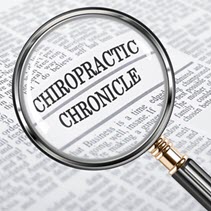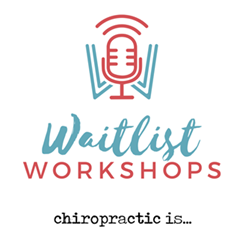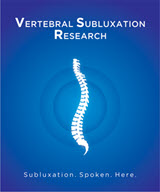New Research on Heart Related Disorder & Chiropractic

Research has shown not only that the brain and nervous system relies on normal spinal structural integrity, balance and joint movement, but that complex neurochemical communication and pathways involved in helping people adapt to their environment are tied into spinal biomechanics and their related neurological pathways.
“It makes perfect sense when you think about it” stated Dr. Matthew McCoy DC, MPH a chiropractor, public health researcher and editor of the journal that published the study. McCoy added “The brain constantly needs and wants to know what’s going on in the body relative to all functions of the body. If there is obstruction to the neurological communication between the spine and the brain all sorts of malfunctions can occur and this can lead to symptoms such as blood circulation disorders.”
“There are very important functional relationships between the spine and the brain that if disturbed can result in a host of problems with how the body functions” remarked McCoy. He added “If there is abnormal position or movement of the spinal vertebra this can lead to nerve obstruction. It is this obstruction, called vertebral subluxation, that chiropractors correct.”
The patient reported on in the study was a 31-year-old female with postural orthostatic tachycardia syndrome, POTS, since she was 16 years of age. She also had neck pain from working long hours. Her neck pain did not interfere with activities of daily living, but she did get tightness in her neck and upper back. She was on medication to balance her salt and water to normalize her blood pressure. She weaned herself off because of the way it made her feel.
The chiropractor examined her and found structural shifts in her neck, midback, low back, and pelvis. She had decreased range of motion, tenderness, and muscle spasms. These structural shifts can lead to obstruction of the nerves and it is this obstruction, called vertebral subluxations, that chiropractors correct.
Following chiropractic care, the frequency and intensity of the POTS decreased, and her neck pain and upper back resolved. She was able to sit and work without pain.
The study’s author called for additional research to investigate the clinical implications of chiropractic care of those with POTS.
Contact Information:
Matthew McCoy DC, MPH
Annals of Vertebral Subluxation Research
https://www.vertebralsubluxationresearch.com/vertebral-subluxation-research-1/
support@vertebralsubluxationresearch.com

Research News
- The 19th International Research and Philosophy Symposium (IRAPS): Bridging Philosophy, Science, and Practice in Chiropractic
- New Study Uncovers the Broad Systemic Benefits of Chiropractic Care on Nervous, Endocrine, and Immune Systems
- The Hidden Power of the Spine: How Vertebral Subluxation Impacts Health Through Systems Biology
- New Study Sheds Light on Vertebral Subluxation and Systems Biology
- Understanding Cervical Spine Movement and Motor Vehicle Accidents













